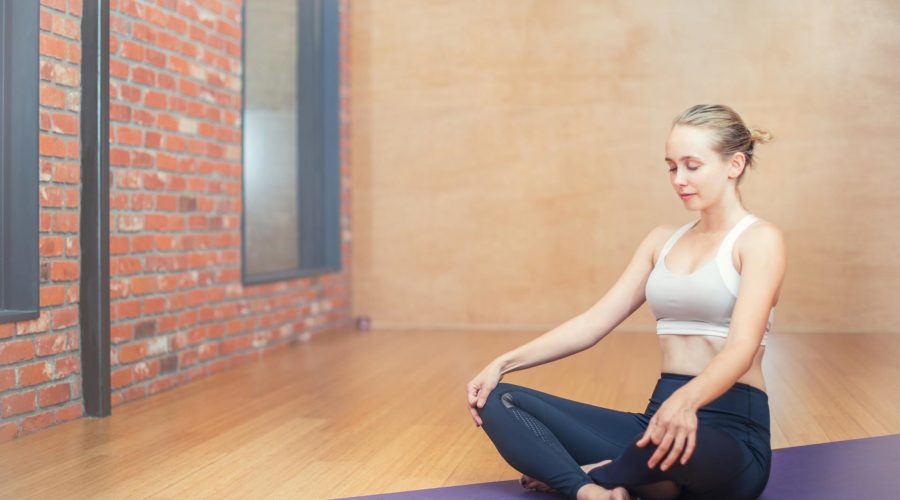Breathwork Training – How to Do It and How It Compares to Therapies
Breathwork training is a critical aspect of meditation. Understanding the proper technique allows you to be in the present moment, relax your mind, and help you de-stress. It requires nothing but yourself, mind, and spirit.
In today’s day and age, it’s hard to even imagine that something this valuable and beneficial for your overall health and wellbeing can be free, easily accessible to literally everyone, and possible at any given moment. And yet, it is.
That being said, learning how to meditate isn’t easy. It might seem like all you need to do is sit or lie down and close your eyes, but it’s when you actually find yourself in that position that you realize how difficult it is to sit still and be by yourself, with yourself, for a certain period of time.
Seconds feel like an eternity and every position you try to squirm yourself into becomes uncomfortable after a while. That’s why meditation gurus always state how “practice makes perfect.”
RELATED: Holotropic Breathwork: What It Is, And What Happens During An Experience
How Breathwork Training Compares to Other Forms of Therapy
| Factor | Breathwork Training | Traditional Talk Therapy | Cognitive Behavioral Therapy (CBT) | Mindfulness-Based Therapy | Physical Therapy |
| Methodology | Uses breathing techniques to improve mental and physical well-being. | Focuses on talking to address mental health issues. | Involves structured sessions to modify thought patterns. | Incorporates mindfulness practices to improve mental health. | Focuses on physical exercises to rehabilitate and improve physical health. |
| Benefits | Can reduce stress, improve mood, enhance concentration. | Can provide emotional healing, improve communication skills. | Effective in treating anxiety, depression, and certain disorders. | Reduces stress, improves emotional balance, increases self-awareness. | Alleviates pain, improves mobility and physical function. |
| Duration | Session lengths vary; often shorter than talk therapy. | Typically involves weekly sessions over months or years. | Usually a set number of sessions (e.g., 10-20). | Varies; often includes daily practice. | Depends on condition; can be short-term or long-term. |
| Accessibility | Can be practiced independently or with a guide. | Requires a licensed therapist. | Requires a trained CBT therapist. | Can be self-taught or guided by a therapist. | Requires a physical therapist or rehabilitation specialist. |
| Cost | Can be low-cost or free (self-guided); workshops may cost more. | Generally more expensive; depends on therapist rates. | Similar in cost to talk therapy. | Can be low-cost (self-guided) or vary with professional guidance. | Varies; often covered by health insurance. |
| Potential Risks | Low risk; may cause discomfort for those with respiratory issues. | Low risk; emotional discomfort possible. | Low risk; may be challenging for some thought patterns. | Low risk; may be challenging for those with severe mental health issues. | Low risk; injury possible if exercises are done incorrectly. |
New: Interested in Being Part of a Psychedelics-Focused Clinical Trial? Sign Up Here
Benefits Of Meditation
Every person who felt the power of meditation can speak to its incredibly positive effect on their mind and bodies, making them feel relaxed, less stressed, and even less reactive in stressful situations. And although experience and testimonials can speak for themselves and are often enough evidence for someone to try it out themselves, science proves the benefits of meditation through medical proof.
Studies showcase its amazing effect on lowering stress levels, reducing symptoms of PTSD, relieving anxiety and depression, improving focus and memory, promoting better sleep, lowering blood pressure and inflammation, and helping you find a sense of purpose.
These health benefits are only the tip of the iceberg and with plenty of studies underway, we might finally listen to all Tibetan monks who’ve been doing this for thousands of years and reaping all the benefits.
Ready to explore a new horizon in mental health? Try out the beta version of HealingChat, HealingMaps AI chatbot that takes all our vetted content, clinics and retreats to answer all your questions in a safe environment. Try the beta version now!
RELATED: 9 Easy Ways to Stimulate Your Vagus Nerve
How To Practice Proper Breathwork Training
Start by finding a comfortable seat or lie down on a supportive mat and close your eyes. Place one hand on your belly and the other on your chest and simply observe your breath. Notice your inhales and exhales and feel the air enter and exit your nostrils.
Now start observing your hands and see how much each one moves as air goes in and out. You’ll probably notice how the hand that’s on your chest moves and the one on your belly not as much. That means you’re breathing shallowly and it’s common amongst most people. This is your invitation to deepen your breath, and to move the hand on your belly as much as you can.
Inhale and fill out your belly; exhale and empty it out. Keep repeating this exercise and really use your breath to spread oxygen to every cell in your body. This way, you’ll notice how focusing on your breath made you forget about everything else you might have thought, felt, or experienced prior to sitting down. It’s just you, your breath, and nothing else.
This is where the power of meditation shines through. It’s the incredible ability to disconnect from the physical world and just be.



